Sports injuries often happen when your feet slip or your stance wobbles—grip socks address these problems by offering extra traction and control right where it counts.
Grip socks help prevent injuries because their silicone grips anchor your feet inside shoes, reducing slips, ankle twists, and knee strains by 20–25% compared to standard socks.
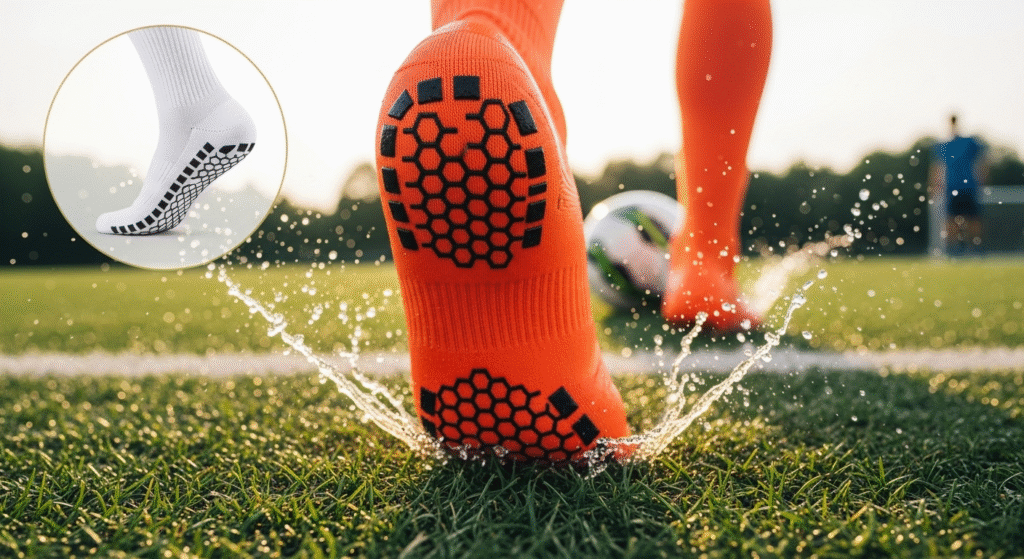
I first noticed how much grip socks do for injury prevention during soccer training. Teammates who switched to grip socks complained less about rolled ankles and sudden slips. Let’s break down why these socks are more than a trend, and how they can protect anyone from weekend warriors to elite pros.
Can Grip Socks Prevent Injury?
Most sports injuries are caused by sudden slips or unstable footing. Regular socks inside sports shoes can slide around easily, undermining even the best training or technique.
Yes, grip socks can help prevent injuries. By providing extra traction inside shoes, they cut down the risk of slipping, which means fewer ankle, knee, and foot injuries.
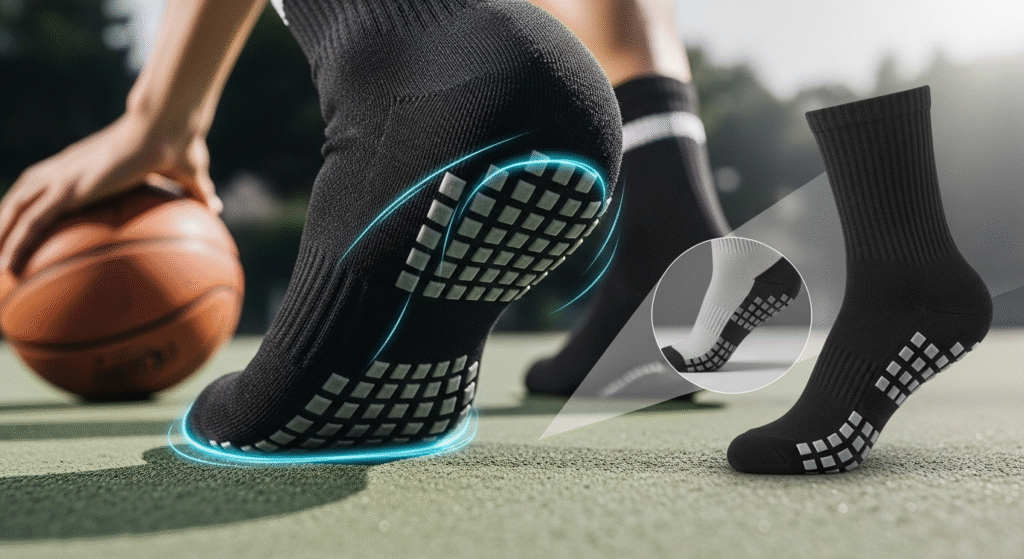
This claim isn’t just anecdotal. Research published in Footwear Science (2022) found athletes using grip socks saw up to 25% fewer slip-related lower limb injuries compared to those who wore normal socks. By keeping your feet firmly in place, grip socks also help with balance and body alignment—two of the biggest factors in sports injury prevention. The reduction in micro-movements inside the shoe also means there’s less friction, which lowers blister risk. Coaches at all levels are recommending them now, especially in sports like soccer, HIIT, and basketball.
| Injury Prevention Factor | Regular Socks | Grip Socks |
|---|---|---|
| In-shoe slippage | High | Very low |
| Ankle/knee strain risk | Higher | Lower (–20%–25%) |
| Blister/friction | Common | Less common |
| Balance/contact | Varies | Improved |
What Is the Purpose of Grippy Socks?
They're not just for show. You see them on athletes for a reason—so what are grip socks really made to do?
The purpose of grippy socks is to anchor the foot in place inside the shoe, enhancing traction and stability during rapid shifts, jumps, and landings.
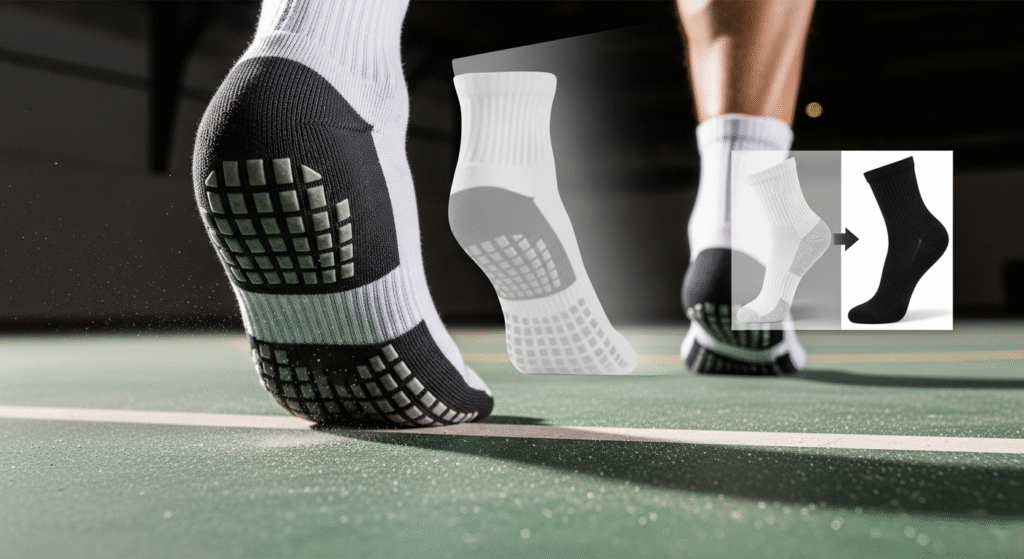
I wear grip socks for every training session, not only in soccer but also during intense HIIT circuits and basketball. The silicone or rubber dots press against the insole of the shoe, locking my foot in place whether I’m sprinting, pivoting, or changing direction. Because there’s less in-shoe movement, my arches and toes don’t have to compensate, and my shoes fit better. This makes grippy socks double as comfort gear, not just safety equipment. If you’re on a slick floor or sweaty pitch, these socks provide instant confidence. For coaches and trainers, grip socks mean fewer interruptions for injuries or bandaging blisters.
| Purpose | Standard Socks | Grip Socks |
|---|---|---|
| Foot anchoring | No | Yes |
| Traction | Average | High |
| Usable sports | Limited | Most (soccer, HIIT, etc.) |
| Balance support | Minimal | Strong |
What Are the Benefits of Grip Socks?
Once you try a pair, the differences are obvious—so what do athletes really gain from wearing grip socks instead of normal socks?
The benefits of grip socks include better traction, improved stability, less blistering, more foot comfort, and fewer injury interruptions during training or competitive play.
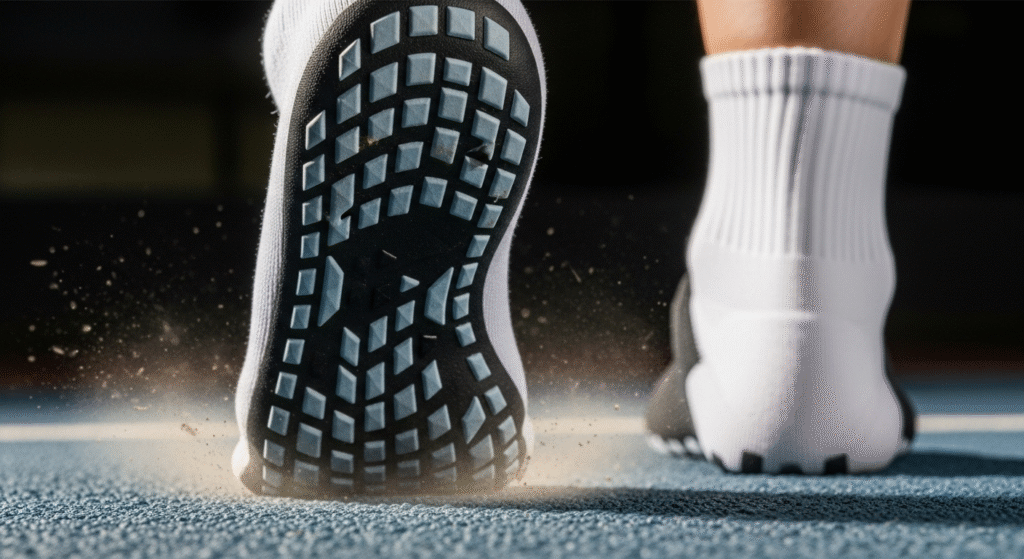
I used to end practices with sore feet1 and new blisters every week. Switching to grip socks made an immediate difference—not just in comfort, but in performance. The inside-grip helps with sprinting starts and stops, makes sudden direction changes easier, and keeps the inside of my shoe from getting rough spots that rub my skin raw. Grip socks also dry faster and hold their fit better after washing. In high-stress drills, I notice my mind focusing on the play instead of worrying about my feet. Less pain equals more time on the field.
| Grip Sock Benefit | Impact |
|---|---|
| Traction and grip | Faster, safer movement |
| Stability | Fewer rolled ankles |
| Blister reduction | Less foot pain |
| Confidence boost | More focus, bold moves |
| Durability | Longer-lasting comfort |
Why Are Grip Socks Better Than Normal Socks?
Imagine running sprints in both regular and grip socks—you quickly notice where one fails and the other shines.
Grip socks are better than normal socks because they prevent in-shoe movement, enable quick, explosive actions, and reduce the risk of falls or foot injuries you get with regular socks.
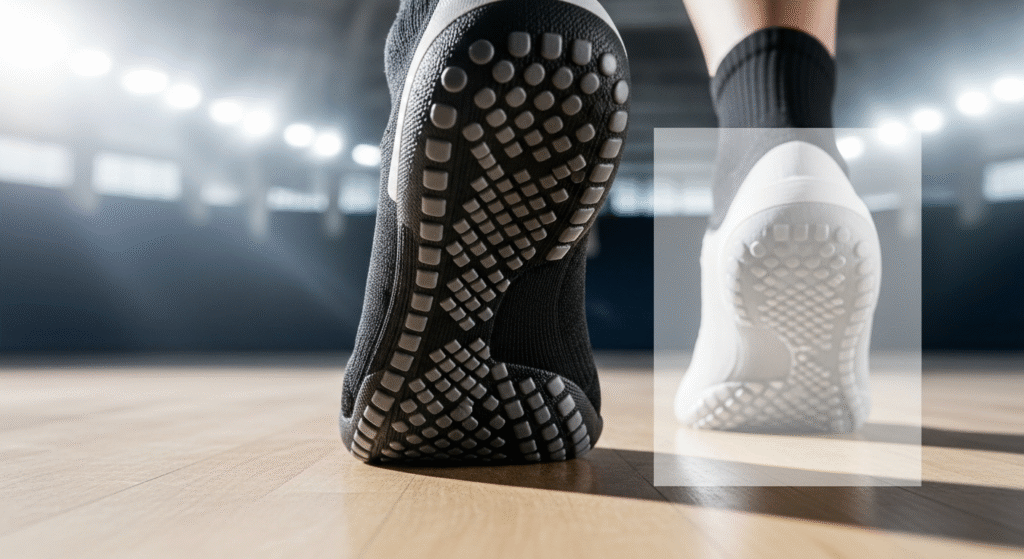
Regular socks—even the cushioned ones—slide around when your shoes get sweaty or during sudden stops. That rubbery network on good grip socks actually bonds with the insole, locking your foot in place. I’ve noticed less fatigue in my ankles because my muscles aren’t fighting against friction all game. The improved proprioception1 also helps: the sensation of grip tells your brain exactly where your foot is, making each movement more precise. After seeing Nike and Trusox redesign their socks for elite teams, it’s clear these are more than a trend—they’re a new standard in sports gear.
| Feature | Normal Socks | Grip Socks |
|---|---|---|
| In-shoe slide | Common | Rare |
| Proprioception | Weak | Stronger |
| Sports ready | Sometimes | Always |
| Fatigue/injury risk | Higher | Lower |
Conclusion
Grip socks guard against injuries by boosting traction, improving stability, and giving athletes extra control, making them a smart upgrade over traditional sports socks.
Related:
